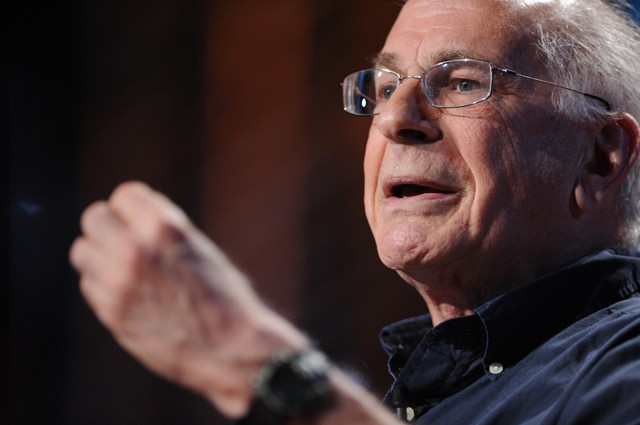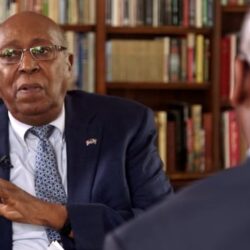 Academic Funding
Academic Funding Timeline of US Government and Social/Behavioral Science

1941 – Celebrity technocrat Vannevar Bush named director of the Office of Scientific Research and Development (the precursor to the National Science Foundation), which helps shepherd important wartime projects like improved radar, production of penicillin and a proximity fuze for the atom bomb.
1945 – Marshaling his World War II experiences to look at a post-war America, Bush releases the landmark Science, the Endless Frontier. The report acknowledges the value of social science, but not their salience: “Progress in other fields, such as the social sciences and the humanities, is likewise important; but the program for science presented in my report warrants immediate attention.” Later that year, members of the Social Science Research Council appear before Congress to argue that social science should be included in a proposed ‘National Science Foundation.’
… [T]he federal government has the resources and the growing will to carry the major financial burden for social science support, its dominating position, however understanding and praiseworthy, calls not for withdrawal from the field as some have argued, but for increased positive concern by the private sectors of society.
Former Social Science Research Council president Donald R. Young, 1962
1950 – Congress creates the National Science Foundation as an independent agency. Social and behavioral sciences are presumably included under the rubric “other sciences,” which the NSF’s online history labels as an entrance that gave the fields “second-rate status.”
1955 – The NSF places a program for sociophysical sciences – which includes mathematical social science, human geography, economic engineering, statistical design, and the history, philosophy, and sociology of science — in the mathematical, physical, and engineering sciences division.
1956 – Symbolizing the migration of social and behavioral research funding from private foundations to the federal government, the Ford Foundation, arguably then the largest funder of basic social and behavioral science research, shutters its Behavioral Sciences Division. Ford had founded the Center for Advanced Study in the Behavioral Sciences two years earlier.
1957 – The Social Science Research Program is established at NSF, focusing on anthropology, economics, sociology, and history and philosophy of science.
1958 – NSF creates Division of Social Sciences; it was budgeted $750,000 (with more than half of that slated for anthropology). Vice President Richard Nixon is a leader in the move, and much of the impetus focused on national security and defense benefits from behavioral science. But not all are enthusiastic; one National Science Board member remarks that “we have to face up to the fact that the social sciences–except for a few extremely limited areas–are a source of trouble beyond anything released by Pandora.”
1962 – The President’s Science Advisory Committee releases the statement, Strengthening the Behavioral Sciences, and recommends that behavioral sciences be given a heightened role in the National Academy of Sciences-National Research Council. The Division of Anthropology and Psychology is recast as the Division of Behavioral Sciences, adding economics, political science, and sociology immediately.
1965 – NSF’s Division of Social Sciences starts supporting research into political science.
1966 – The National Academy of Sciences and the Social Science Research Council jointly sponsor a three-year Behavioral and Social Science Survey. One recommendation: an annual “social report to the nation” from the federal government. Another recommendation: Create a national data system to make data more accessible to researchers; the report sought a continuing body to monitor privacy and data security issues related to this proposed system.
1966-67 – Senators Fred Harris, D-Oklahoma, and Walter Mondale, D-Minnesota, propose a separate National Foundation for the Social Sciences. Such a separate entity would “give the recognition, status, visibility and prestige the social sciences need,” Harris said. Opposition to a separate agency was voiced by political scientist Herbert Simon, later the first social scientist named to the President’s Science Advisory Committee, who saw strength in maintaining a unified NSF and in lobbying policy-making entities like the Office of Science and Technology. Mondale also introduces a bill to create a Council of Social Advisers, modeled on the Council of Economic Advisers.
1968 – The National Academy of Sciences releases The Behavioral Sciences and the Federal Government; the National Science Board empanels a Special Commission on the Social Sciences. Federal law amending the NSF charter explicitly authorizes the NSF to support the social sciences.
1969 – National Science Board releases Knowledge into Action: Improving the Nation’s Use of the Social Sciences
1971 – NSF creates the office of Research Applied to National Needs, or RANN.
1975 – NSF is reorganized into seven directorates. Social and behavioral science is lumped into a Directorate of Biological, Behavioral, and Social Science. Meanwhile, a long-simmering dispute over a social studies course for fifth graders, “Man: A Course of Study,” developed with NSF funds, becomes a national issue as Congressman John Conlan charges that “Man” attacks family values. Members of the House try but fail to require that all NSF projects be approved by Congress before being funded.
1977 – Following release of a report from an NSF committee (chaired by future Nobel laureate in economics Herbert Simon) that looked specifically at social and behavioral science programs and dealt with the conflict between applied and basic research, RANN is shuttered. The report notes that NSF is second, to the United States Department of Health, Education, and Welfare, in funding basic research in social and behavioral science.
Not until we have a serious intellectual history of the social sciences will scholars be able to sort out the full consequences of the National Science Foundation’s funding criteria for the social sciences. At this point, it seems reasonable to conclude that these funding criteria – in response to actual or perceived congressional opinion – left deep marks on what today constitute the social sciences.
Kenneth Prewitt, 1982
1980 – The House Subcommittee on Science, Research and Technology holds a hearing on funding of social science. The social science community comes out in force (including Simon, psychologist Judith Rodin, sociologist Reynolds Farley and Kenneth Prewitt, then president of the Social Science Research Council) to defend federal spending and no congressional-level cuts are imposed. An NSF-originated proposal to create a social science directorate founders when anthropology and psychology are left out of the putative directorate’s remit.
1981 – The federal Office of Management and Budget in the new Reagan administration proposes cutting NSF funding for social and behavioral science by three quarters. The proposal fails in the House.
1982 – The Institute of Medicine (now the National Academy of Medicine), releases Health and Behavior: Frontiers of Research in the Biobehavioral Sciences. Behavioral and Social Science Research: A National Resource released by the National Academy of Sciences
1983 – The Department of Labor’s Employment and Training Administration fails to kill the National Longitudinal Surveys of Labor Market Experience; the Bureau of Labor statistics takes over the project.
1989 – House hearings feature Herbert Simon testifying that social and behavioral science should get its own directorate at NSF. A task force forms to study splitting biology and behavior at NSF.
1991 – The NSF task force releases Adapting to the Future, which calls for creating two new directorates, one for biology and one for social, economic, and psychological sciences. The foundation creates a Directorate of Social, Behavioral, and Economic Sciences, which incorporates NSF’s Office of International Science and the NSF’s statistical arm. Sociologist Cora Marrett is its first leader; she twice served as the NSF’s acting director in the current decade. Assistant Director for the Social and Behavioral and Education Sciences is established in the White House Office of Science and Technology Policy by President George H.W. Bush’s science adviser Allan Bromley.
1993 – Legislation directs the National Institutes of Health to establish an Office of Behavioral and Social Sciences Research. The office comes online two years later.
1995 – The House Budget Committee, under its new chairman. John Kasich, Republican of Ohio, suggests that social, behavioral and economic sciences were not “strong, fundamental science,” and should not be funded. In a draft bill, the House Science Committee – headed by political scientist Robert Walker — directs NSF to eliminate the SBE directorate. The effort fails.
2006 – Senator Kay Bailey Hutchison, Republican of Texas, argues that the social sciences do not belong at NSF and introduces legislation, neutered in later wrangling, that deprioritizes social science (along with biological and environment sciences).
2009 – Senator Tom Coburn, a Republican from Oklahoma, is unsuccessful in banning NSF funding for political science research. ‘‘Political program siphons resources away from research that promises greater scientific discoveries with real world benefits’’ he argued about a field that has ‘‘little, if anything, to do with science.”
2011 – Coburn releases the 73-page National Science Foundation: Under the Microscope, which among other things called for the elimination of the Directorate of Social, Behavioral, and Economics. Coburn asked if “these social sciences represent obvious national priorities that deserve a cut of the same pie” as STEM.
2012 – Representative Jeff Flake, Republican of Arizona, resurrects the Coburn idea to eliminate political science from the NSF. Rep. Denny Rehberg, Republican of Montana, tries to eliminate economics research at the National Institutes of Health. Rep. Daniel Webster, Republican of Florida, tries to eliminate the American Community Survey. All fail.
2013 – Coburn successfully amends the NSF appropriation to restrict political science spending to projects that “promote the national security and economic development of the United States.”
2014 – The Frontiers in Innovation, Research, Science, and Technology Act of 2014, which re-authorizes federal funding for the National Science Foundation, includes language to cut SBE spending and to have Congress determine directorate-level spending at NSF. FIRST does not make it out of Congress.
2015 – A bill reauthorizing the popular America COMPETES Act, which includes funding for NSF, is introduced that sets specific budgets for each NSF directorate. The allocation for SBE is roughly half the previous year’s budget. House Science Committee Chairman Lamar Smith, Republican from Texas, introduces a bill that would require the NSF to justify, in writing, that every grant it makes is in the national interest and “worthy of federal funding.” Smith’s examples of unworthy grants are drawn from the social, behavioral and economic realm.
This is a time of remarkable promise for the social sciences. Yet short-sighted federal funding cuts are threatening our ability to answer questions that have the potential to inform and shape all of our lives. The last 51 of the United States’ recipients of the Nobel Prize in Economics were supported by the research divisions of the National Science Foundation’s Directorate for Social, Behavioral, and Economic Sciences, which may soon face a more than 50 percent reduction from current federal funding. If we hope to address complex and consequential issues such as climate change, global pandemics, and inequality and human rights, we cannot ignore unique insights into the human and behavioral that the social sciences alone can provide.
Harvard University President Drew Faust, 2015





































































































Yes. Social Sciences is really an important aspect in a lot of things. And right now, it’s actually a good time to take advantage of these studies because Big Data and IoT are thriving, which makes the consolidation of data easier. Also, social media is a new avenue that can be incorporated in this study.